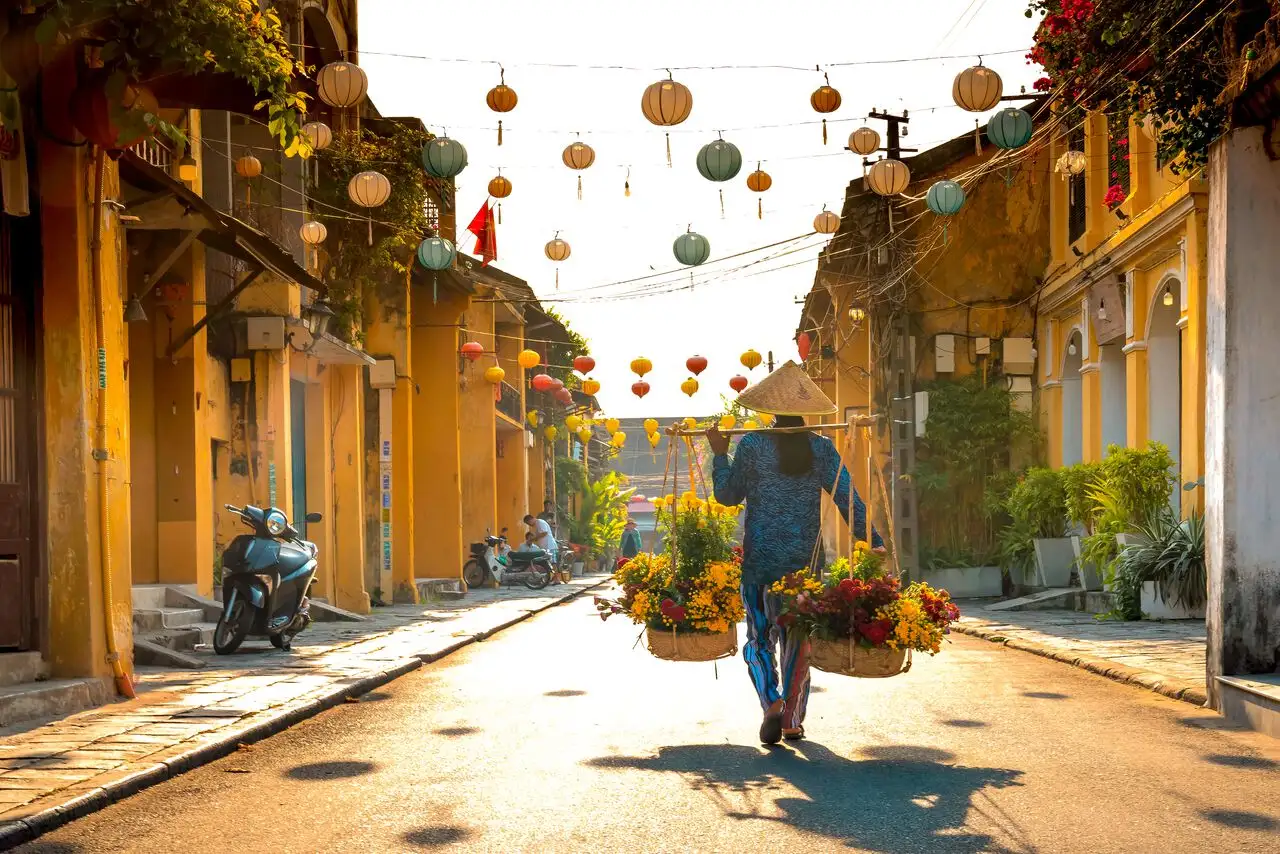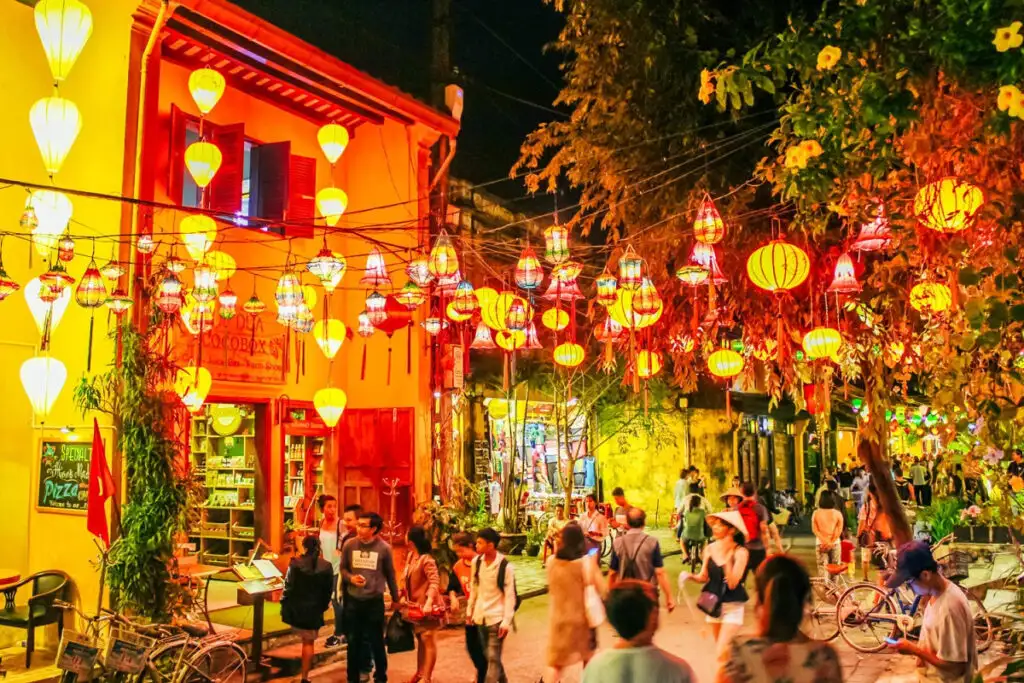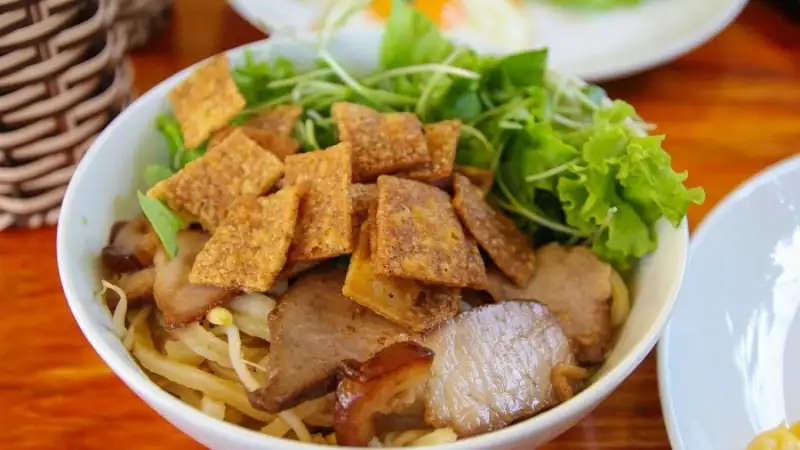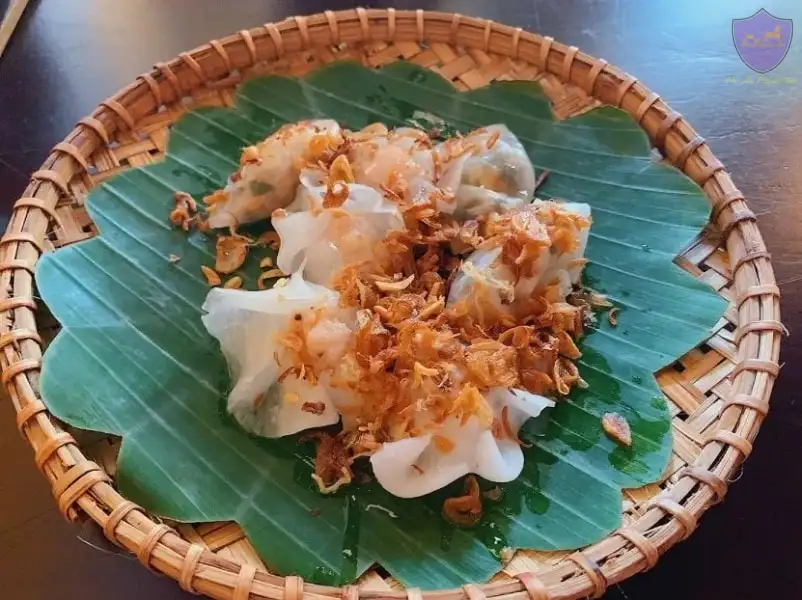Hoi An Weather: When is the best time to visit Vietnam’s renowned historic town?
One of the most popular tourist destinations in Vietnam is usually Hoi An. This article will undoubtedly provide helpful advice if you’re worried about the climate and Hoi An weather. Take a moment to review the details below and make sure you’re ready for your next journey now with Bliss Hoi An!
Overview of Hoi An Weather

Hoi An, which lies in Southern Central Vietnam’s Quang Nam province, experiences tropical monsoon weather. Throughout the year, the weather Hoi An may be characterized as hot and muggy with plenty of sunshine. The average annual temperature in Hoi An is around 25.6°C, with the highest temperature reaching 39.8°C from June to August and the lowest temperature dropping to 22.8°C. From November to January, the temperature in Hoi An ranges from 19 to 24°C.
There are two distinct seasons in Hoi An weather system: the dry season and the rainy season.
- January through July is considered the dry season, with an average temperature of 33 degrees Celsius. During these months, there is hardly any rain and constant sunlight from dawn to dark, making it easy for visitors to explore Hoi An.
- August through December is when the rainy season occurs. Typhoons, torrential rain, and sporadic flooding are all common. This is also the off-peak travel season in Hoi An. If you intend to visit Hoi An during this period, don’t forget to check the weather forecast.
Best Times to Visit Hoi An Based on Weather
January to March

Based on Hoi An weather, the best time to visit is between January and March because of the city’s mild, dry climate, with typical highs of 18 to 23 degrees Celsius. It’s appropriate for many fantastic outdoor activities in Hoi An. Visitors may learn more about the history of the country by visiting Japanese Bridge Hoi An, living like a farmer for a day at Tra Que Vegetable Village, or taking part in the full moon night celebration at Hoi An Night Market on the first and fifteen of the lunar month.
April to June

Based on Hoi An weather, April through June sees more sunlight, but the temperature stays quite cool. The range of temperatures is 26 to 31°C. This is Hoi An’s busiest travel season because of the ideal weather for activities like swimming in the refreshing An Bang Beach, diving and snorkeling at Cham Islands, and taking in the breathtaking scenery and exhilarating experiences at Hai Van Pass.
July to September

In Hoi An, the rainy season has just begun. Hoi An has more rainfall during this time, and nighttime lows of 21°C are possible. It’s the perfect time to explore Hoi An’s numerous tourist destinations with cultural and historic significance, such Quan Cong Temple and My Son Sanctuary, while the number of visitors is beginning to fall.
October to December

Hoi An Vietnam Weather has chilly, wet weather from October to December. It is appropriate for seeing several Hoi An historical and cultural landmarks, including Tan Ky Old House, Cantonese Assembly Hall, and Phuc Kien Assembly Hall. Even if it might not be the ideal time to visit Hoi An, tourists can still take in the serene and historic splendor of the old town.
When is the best time to visit Hoi An?

The ideal time to visit Hoi An is unquestionable during the dry season when it’s easy to walk around and engage in outdoor activities due to the area’s low humidity, mild sunlight, and showers. More precisely, February through April, when Hoi An has mild, comfortable weather, is the best time to visit. Hoi An is less busy because this is not the busiest time of year for tourists.
You shouldn’t skip Hoi An during the rainy season if you’re looking for a less crowded or cheaper trip. Since there won’t be as many visitors at this time of year, airline tickets, hotel rates, and dining establishment costs will all be lower. In addition, rainy days provide visitors with a fresh perspective on Hoi An’s beauty as they unwind and explore its well-known sites in greater comfort.
Weather-Related Activities in Hoi An

The top advice for visiting Hoi An during the dry season
Hoi An weather transitions from the rainy season to the dry season between February and July, bringing with it cooler temperatures, less humidity, and less precipitation. The two months that make up the dry season are February through May, when temperatures are at their best, and June through August, when they can soar to 34 degrees Celsius.
Japanese Bridge

Japanese Bridge Hoi An, which has been standing for 400 years, is a stunning example of ancient architecture and culture that unites Vietnam with Japan. This effort was said to be like a sword piercing a monster’s spine, stopping it from waving its tail and producing earthquakes. The bridge is now officially recognized as a Vietnam National Historical and Cultural Relic. It can also be seen on the Vietnamese currency’s VND 20,000 banknote.
My Son Sanctuary

Beginning in the fourth century, work on My Son Sanctuary was finished in the early fourteenth. This 1,158-hectare complex has around 70 temples and towers with distinctive architectural designs that reflect the many eras of the Champa kingdom’s history. In addition, Shiva, a Hindu deity, was worshipped in the compound.
Hoi An beaches

Along with its collection of antique buildings, Hoi An is home to several breathtaking beaches. The two most well-known beaches among them are An Bang Beach and Cua Dai Beach. These two immaculate beaches have silky ivory dunes. Early morning walks on the beach are highly suggested if you want to view the dawn, take in the fresh air, and unwind on the sand in the soft morning light. On the beach, you may engage in a variety of water activities.
Hoi An night market

When you stroll through Hoi An at night, you’ll notice a lot of bustling commercial districts, art exhibits, and a wide selection of street cuisine with unique regional flavors. On several busy streets like Bach Dang, Tran Quy Cap, Tieu La, and Hoang Van Thu Streets, you may visit Cong Nu Ngoc Hoa Night Market, Nguyen Hoang Night Market, and many more popular markets.
Tra Que Vegetable Village

Fragrant veggies like basil were grown at the Tra Que Vegetable Village on the outskirts of Hoi An. The name Tra Que (basil tea in Vietnamese) was given to this unusual vegetable in the 18th century after a monarch discovered it in this hamlet. It tasted strongly of basil and smelled sweetly of camellias. The town continues to raise organic veggies using the old-fashioned way. It cultivates solely spices, including cilantro, perilla, onions, and basil.
The comprehensive guide to visiting Hoi An during the wet season
The rainy season in Hoi An weather occurs from September to January. There are rising seas, regular showers, chilly temperatures, and powerful gusts. Storm warnings might be in effect from mid-October until mid-December. Even with its unfavorable weather, the old town of Hoi An retains its romantic charm during the rainy season.
Cantonese Assembly Hall

The Cantonese Assembly Hall, constructed in the late 1800s, served as the hub for Chinese social interactions and meetings in Hoi An. Even though no organized cultural or religious events are held here anymore, many priceless historical records and artifacts are still kept here.
Tan Ky Old House

This ancient home, which was constructed in 1741, combines Vietnamese, Japanese, and Chinese architectural designs. It has been acknowledged by UNESCO as a World Cultural Heritage Site and as a National Historical and Cultural Relic of Vietnam. The owners now reside upstairs, however, guests are welcome to explore the ground level.
Quan Cong Temple

In the historic town of Hoi An, the Chinese constructed the Quan Cong Temple in 1653. It honors Guan Yu (162-220), one of China’s most gifted generals of the Three Kingdoms era. Over hundreds of years, the temple has undergone six restorations, the most recent of which was completed in 1966.
Phuc Kien Assembly Hall

The Assembly Hall of the Fujian Chinese Congregation, also known as Phuc Kien Assembly Hall, is a venue of devotion for Mazu, the Avalokitesvara Bodhisattva, and other sea, wealth, and birthing deities. Chinese immigrants to Hoi An constructed the assembly hall in 1697, giving it its distinctive Chinese architectural style.
Tips for Traveling to Hoi An During Various Weather Conditions
A few experiences from seasonal travel
Because of the heat during the dry season, it’s critical to maintain proper hydration. You may stay cool and refreshed by keeping a water bottle with you and drinking lots of water. It’s also crucial to shield oneself from the sun, so don a wide-brimmed hat, sunglasses, and sunscreen. To remain cool in the hot months, dress in breezy, light cotton or linen garments.
To avoid the warmest portion of the day, schedule outside activities for early in the morning or late in the afternoon. Remember to bring your swimwear and other beach necessities because now is the best time to visit An Bang Beach or Cua Dai Beach. Since the dry season is the busiest travel time of the year, it’s essential to reserve your lodging in advance to guarantee the finest selection.
This is peak tourist season in Hoi An, so make sure you book your accommodation early for the best experience. Bliss Hoi An is a famous and prestigious resort with a convenient and convenient location that will help you easily explore Hoi An.


Several pointers for the most relaxing journey
To manage the damp streets during the rainy season, it is imperative to pack high-quality weather gear, such as waterproof boots and an umbrella or raincoat. Have a flexible itinerary so you may adjust it in case the weather causes modifications to your original intentions. Visits to art galleries, museums, and temples are examples of indoor pursuits that provide excellent substitutes for outdoor adventures.
It’s important to keep up with weather predictions and typhoon warnings. You may improve your day-to-day planning by downloading a dependable weather app for real-time information. During the rainy season, Hoi An is prone to flooding, so ask your lodging about their flood control procedures and use caution when visiting low-lying regions.
During the rainy season, it is essential to savor seasonal cuisine. Try some of the best comfort dishes for rainy days, such as Bánh Xèo and Mi Quang. Rainy days don’t always mean that you can’t take lovely pictures; they may also offer special photo chances with reflections and a distinct atmosphere.
Impact of Weather on Hoi An’s Culture and Festivals
Impact of Hoi An Weather on culture and festivals
Full Moon Festival (Hoi An Lantern Festival)

One of the most captivating occasions in Hoi An is the Full Moon Festival, which is held on the fourteenth day of every lunar month. Clear skies and mild temperatures throughout the dry season add to the allure of the lantern-lit town. On the other hand, excessive rains during the wet season might cause disruptions to the celebration; nevertheless, the town adjusts by arranging extra inside events.
Tet Nguyen Dan (Lunar New Year)

Tet Nguyen Dan, or the Lunar New Year, celebrated between late January and February, marks the end of winter and the beginning of spring. This festival coincides with the transition from the rainy season to the dry season, symbolizing renewal and hope. Festivities include traditional foods, vibrant decorations, and various cultural performances.
Mid-Autumn Festival

Fall foliage peaks in September and October, when the Mid-Autumn Festival takes place. Children mostly like the light processions, lion dances, and mooncakes during this event. Celebrations can be held outside during this time of year due to the weather, however, rain may still fall on occasion.
Quan Cong Temple Festival
An important local god, General Quan Cong, is honored at the Quan Cong Temple Festival in early August. The event, which takes place in the dry season, features cultural performances, dragon boat racing, and outdoor rituals. The success of the event and its large turnout are partly attributed to the pleasant weather.
Seasonal foods and cuisine in Hoi An
The seasons have a significant impact on Hoi An’s cuisine, which has a wide range of dishes that are representative of the region’s climate and farming methods. Hoi An offers a variety of seasonal dishes that highlight the town’s rich culinary history for visitors to savor.
Dry season delicacies
Fresh vegetables are available throughout the dry season because of the warm temperature and plenty of sunshine. Among the seasonal specialties are:

- Hoi An’s specialty is Cao Lầu, a thick rice noodle dish cooked with pork, fresh herbs, and a flavorful broth. The town’s historic well is used to make the noodles according to custom.

- White Rose Dumplings (Bánh Bao Bánh Vạc): These delicate dumplings are filled with pork or shrimp and constructed from translucent rice paper. They are frequently served with a tart dipping sauce and topped with crispy shallots.

- Fried wontons are crispy shells stuffed with pork or shrimp and accompanied by a tart and sweet sauce composed of pineapple and tomatoes.
Rainy season comfort foods

The local cuisine is influenced by the colder temperatures and copious amounts of rainfall seen during the rainy season. Comforting and cozy foods include:
- Mi Quang: A filling noodle meal with pork, shrimp, and a tasty broth seasoned with turmeric. Fresh herbs, rice crackers, and peanuts are frequently used as garnishes.
- Hoi An locals love their Chicken Rice (Cơm Gà), a fragrant rice dish cooked in chicken broth topped with shredded chicken, fresh herbs, and a zesty sauce.
- Bánh Xèo: savory rice flour, turmeric, and coconut milk pancakes stuffed with pork, shrimp, and bean sprouts. Usually, they are eaten with fresh herbs and lettuce.
Travelers can choose to visit Hoi An, Vietnam at any time of year, depending on their tastes, since this location has distinct beauty throughout the year. This post should help provide knowledge on the temperature, weather, and ideal time









